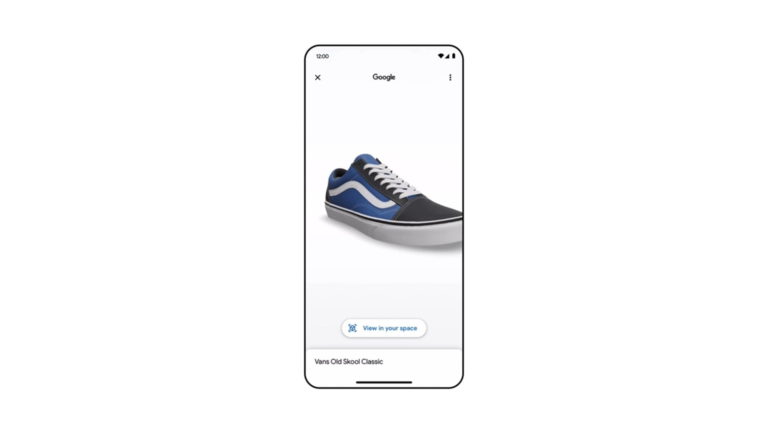
In the ever-evolving landscape of eCommerce, the pursuit of a seamless customer experience is relentless. While many eCommerce players diligently address apparent challenges, subtle complexities often elude the spotlight, causing friction that hinders user experience and, ultimately, conversions. How can AR elevate the art and the science of eCommerce experience design? Here are 8 ways…
1. Driving Engagement
In the mobile-centric era, ensuring a smooth experience on smartphones and tablets is paramount. eCommerce managers often grapple with mobile optimization challenges, including clunky navigation, slow-loading pages, and unresponsive designs. These oversights can create significant friction for users. However, AR emerges as a transformative solution, offering immersive experiences tailored for various devices. AR-powered product visualizations enable customers to virtually try products, turning the mobile shopping journey into an engaging and interactive process.
2. Enlivening the Path to Purchase
Streamlining the checkout process is a well-known priority, yet subtle complexities often infiltrate this critical juncture. Too many form fields, unclear error messages, and a lack of guest checkout options can lead to cart abandonment—a silent killer of conversions. Integrating AR into the checkout process enhances user engagement. For instance, AR sizing tools allow customers to visualize how a piece of furniture will fit within their space or on the walls. This not only aids decision-making but adds an interactive layer to the checkout process, making it a memorable and enjoyable experience.
3. Enriching Transactions
Diverse payment preferences among consumers necessitate a range of payment options. eCommerce managers may unintentionally limit choices, potentially turning away customers who prefer digital wallets, installment plans, or region-specific methods. While AR may not directly address payment options, it enriches the overall shopping experience, making customers more likely to complete their transactions. AR can be employed to create virtual trials of products, allowing users to visualize how items will fit into their lives before making a purchase. This enhanced engagement can motivate users to explore various payment methods to secure their chosen products.
4. Consumer Confidence
Incomplete or unclear product information can lead to hesitations and doubts in the minds of potential buyers. eCommerce managers may underestimate the impact of comprehensive product details, high-quality images, and clear size guides on the customer decision-making process. AR enhances product information by providing an immersive preview of the product. For example, customers can use AR to virtually place furniture in their homes or visualize how a new pair of shoes complements their style. This dynamic visualization not only conveys more information than static images but also addresses the need for the tactile experience that online shopping often lacks.
5. Post-Purchase Engagement
Friction doesn’t end at checkout. Managers may neglect the post-purchase experience, leading to dissatisfaction and reduced customer loyalty. Issues such as unclear order tracking or slow customer support responses can create negative sentiments. AR can play a role in post-purchase engagement by offering interactive user manuals or tutorials through mobile apps. For example, customers buying complex gadgets can use AR to access step-by-step guides for assembly or troubleshooting. This not only enhances the post-purchase experience but also reinforces the brand’s commitment to customer support.
6. Worth the Wait
Slow-loading pages can frustrate users and lead to bounce rates. eCommerce managers may underestimate the impact of website speed on user experience, especially in an era where instant gratification is the norm. While AR applications themselves may require additional loading time, their integration can be strategic. For instance, preload AR features for products likely to be explored, reducing the perception of wait times. The captivating and interactive nature of AR experiences may even mitigate the negative impact of slightly longer loading times.
7. Augmented & Accessible
Accessibility standards are critical for ensuring that eCommerce platforms are usable by individuals with disabilities. Managers may unintentionally overlook or undervalue the importance of compliance with guidelines like WCAG. AR, when designed with inclusivity in mind, can enhance accessibility. Voice commands, haptic feedback, and other features can be integrated into AR applications to ensure that users with diverse abilities can engage with the technology. AR can serve as a tool to enhance, rather than hinder, accessibility.
8. Personalizing Products
Managers might miss the potential of personalization in creating a more tailored and relevant user shopping experience. Ignoring personalization can lead to missed opportunities for increasing customer engagement and satisfaction. AR enhances personalization by allowing users to visualize products in their personal spaces. Customization options can be overlaid in AR, providing a unique and interactive way for users to preview and personalize products before making a purchase. This not only caters to individual preferences but elevates the overall shopping experience, fostering a deeper connection between the customer and the brand.
In conclusion, as eCommerce managers strive for excellence in user experience, addressing these often-forgotten friction points is crucial. AR, with its ability to provide immersive, interactive, and personalized experiences, emerges as a powerful ally in not only minimizing but revolutionizing the online shopping journey. The integration of AR goes beyond solving existing challenges; it sets the stage for a new era of eCommerce, where customer engagement is elevated to unprecedented heights. As we navigate the evolving landscape of digital retail, embracing the potential of AR becomes not just a strategy but a transformative journey toward unparalleled customer satisfaction and brand success.
 Justin Scott is CEO and Cofounder of Dopple.
Justin Scott is CEO and Cofounder of Dopple.






